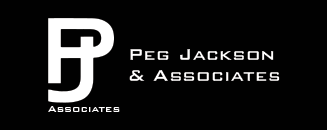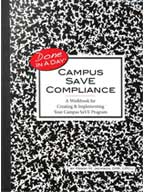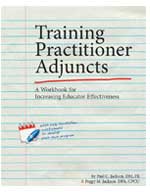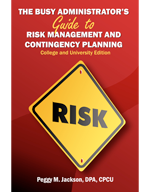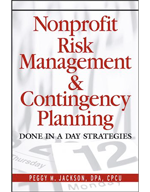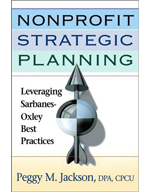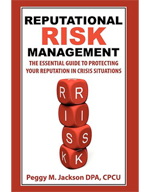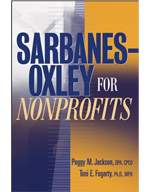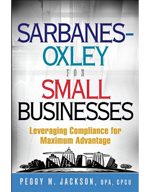By the end of this workbook, you will have the basis for a VAWA/Campus SaVE Compliance Portfolio that includes all required policies, procedures and documents. As part of the 2013 reauthorization of the Violence Against Women Act (VAWA), the Campus Sexual Violence Elimination (SaVE) Act was added, and as of July 2015, every academic institution that disseminates Title IX federal funds is required to implement a Campus SaVE Program. Compliance with these laws is essential to ensuring your institution of higher education remains eligible to disseminate Title IX funds in the form of student loans. This workbook uses the accelerated Done In A Day® model to prepare plans and materials that need to become operational immediately.
This workbook presents a user-friendly model for a practitioner adjunct faculty development program. Now, higher-education institutions can help these important members of the higher-education faculty become more effective educators.
The Busy Administrator’s Guide to Risk Management & Contingency Planning College & University Edition
Today’s academic environment often finds administrators who are tasked with risk management and business continuity planning in addition to a myriad of other responsibilities. Despite these numerous responsibilities, administrators are expected to prepare and monitor risk management activities for the institution. Administrators often know that the institution needs to have a solid Risk Management and Contingency Plan, but they have no idea where to start. The Busy Administrator’s Guide to Risk Management and Contingency Planning offers readers a streamlined, no-nonsense approach to dealing with the risk management and contingency planning – from recruiting a team to preparing the plans.
Nonprofit Risk Management & Contingency Planning Done in a Day Strategies
Could your nonprofit stand up to risk assessment from outside authorities? Would it be ready should a key staff member leave?
Risk management and business continuity planning have the potential for growing and strengthening the internal structure of your nonprofit, yet, these crucial practices are often deferred–or avoided–because many nonprofits fear the planning process. With valuable templates, checklists, and worksheets to facilitate planning and preparation, Nonprofit Risk Management & Contingency Planning: Done in a Day Strategies is the new, uncomplicated way for your nonprofit to get risk management planning done.
Nonprofit Strategic Planning Leveraging Sarbanes-Oxley Best Practices
Required reading for anyone leading a nonprofit organization, Nonprofit Strategic Planning: Leveraging Sarbanes-Oxley Best Practices prepares your organization to engage in meaningful strategic planning and equips you with the practical tools to navigate it through today’s competitive environment. Examine if your nonprofit has the right people on board to achieve its strategic goals. Learn how to establish important control mechanisms and discover the direction in which your nonprofit needs to go and why.
Reputational Risk Management The Essential Guide to Protecting Your Reputation In Crisis Situations
They’re here one day and gone the next – corporate giants like Arthur Andersen disappeared in a puff of smoke. Could this happen to your business, nonprofit or academic institution? Your organization’s reputation is its most valuable – and fragile- asset. Some businesses, nonprofits or academic institutions never recover from a reputational crisis. Others pull through and move on to become bigger and better.
Your organization’s reputation need not be damaged in a crisis! How you handle a crisis will be remembered long after it is passed. Written for businesses, nonprofits and academic institutions Reputational Risk Management will illustrate how to effectively execute a crisis management plan, how to avoid missteps in dealing with a crisis and ensure that everyone in the organization is prepared to deal confidently with a crisis situation.
Sarbanes-Oxley for Nonprofits A Guide to Building Competitive Advantage
The first book to discuss the implications of Sarbanes-Oxley legislation as it relates to nonprofit organizations, Sarbanes-Oxley for Nonprofits is an essential guide for all nonprofit executives and boards who want to know how the new legislation can enhance their organization’s mission. Sarbanes-Oxley for Nonprofits presents the best practices that have emerged from the Public Company Accounting Reform and Investor Protection Act (Sarbanes-Oxley) in a manner that explains their source and value to the nonprofit organization.
Sarbanes-Oxley for Small Businesses Leveraging Compliance for Maximum Advantage
To small business owners, the Sarbanes-Oxley Act (SOX) might seem an overwhelming regulatory burden that should be reserved for Fortune 500 companies. However, in spite of the countless problems you deal with as a small business owner on a daily basis, you need to understand how SOX legislation can affect—and benefit—your company. Sarbanes-Oxley for Small Businesses shows how small business owners can tame this giant legislation’s requirements and best practices to your business’s advantage—and save money, lower overhead costs, and improve sales.
While most of today’s literature on SOX is relevant for large, publicly traded firms, this timely book addresses the frequently overlooked small business with tips on strengthening your business’s internal controls, organizing its documents, and encouraging early reporting of waste, fraud, and abuse. Risk management specialist Peggy Jackson arms you with a blueprint model to streamline the implementation of these requirements and best practices, providing you with the guidance you need to comply with this law and maintain your business’s credibility.
